#low difficulty keywords
Text
The Ultimate Keyword Hack: Find Low-Competition Keywords
How To Find Low Competition Keywords
In the world of blogging, keywords play a key part in determining the success of your blog. Still, to Find low competition keywords that can help you rank high in search engine results runners (SERPs), can be very challenging. Here will talk about how to get low difficulty keywords and increase your chances of getting more organic traffic to your blog.
https://ahrefs.com/
What are Low…

View On WordPress
2 notes
·
View notes
Text
Charts For Assessing Pain And Fatigue
As a person with chronic pain and chronic fatigue, I often find it helpful to use scales to communicate how I'm doing, both for myself to contextualize it and so others have an idea how I'm doing. It's especially helpful for doctors who take you more seriously when you have data.
But I'm really bad at just assessing it in my head, especially consistently. Internalized ableism means I always feel like I'm just being a wimp and I really minimize my pain. So assessment scales that make me look at my behaviors really help break me out of that and be more honest. They also keep me more consistent so the days is more useable.
Both scales in a spreadsheet
Pain Scale
This scale was given to me in a hospital with no indication of where it came from in a really basic badly formatted table. This is my cleaned up version formatted to be saved on a phone or printed.
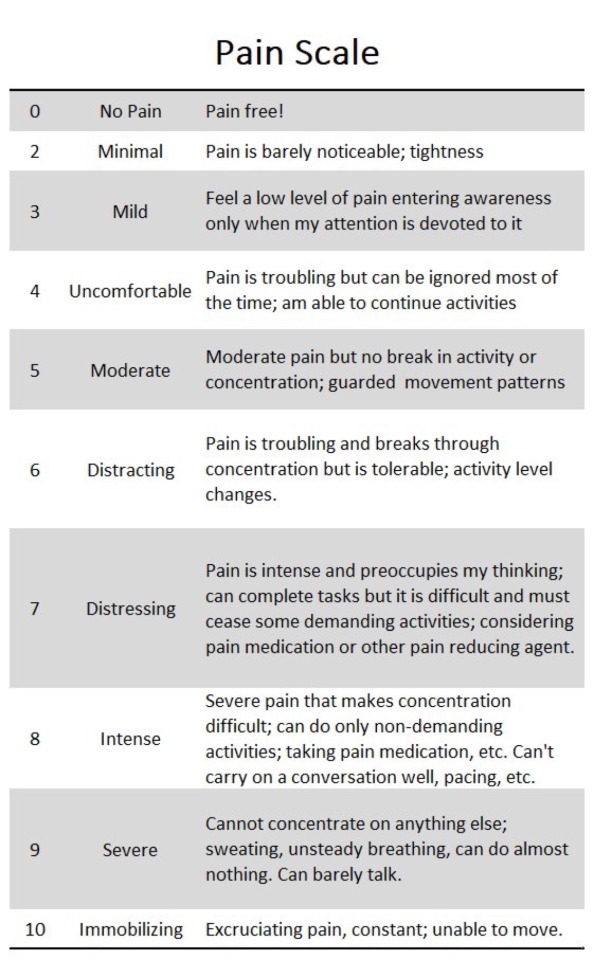
0 - No Pain - Pain free
2 - Minimal - Pain is barely noticeable; tightness
3 - Mild - Feel a low level of pain entering awareness only when my attention is devoted to it
4 - Uncomfortable - Pain is troubling but can be ignored most of the time; am able to continue activities
5 - Moderate - Moderate pain but no break in activity or concentration; guarded movement patterns
6 - Distracting - Pain is troubling and breaks through concentration but is tolerable; activity level changes.
7 - Distressing - Pain is intense and preoccupies my thinking; can complete tasks but it is difficult and must cease some demanding activities; considering pain medication or other pain reducing agent.
8 - Intense - Severe pain that makes concentration difficult; can do only non-demanding activities; taking pain medication, etc. Can't carry on a conversation well, pacing , etc.
9 - Severe - Cannot concentrate on anything else; sweating, unsteady breathing, can do almost nothing. Can barely talk.
10 - Immobilizing - Excruciating pain, constant; unable to move.
Fatigue Scale
This was floating around Tumblr in the colorful version. I can't print it, I can't read it with the colors when I'm tired, and I wanted the scales to normalized going the same direction so here's my formatting version:
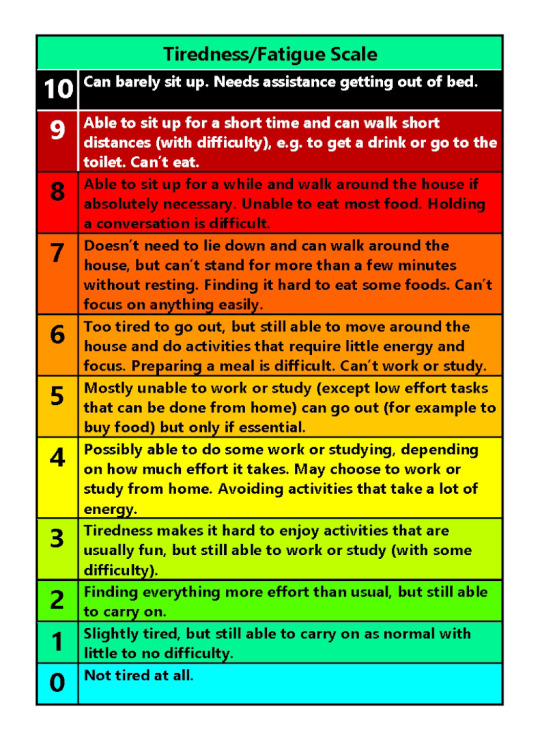
0 - Not tired at all.

1 - Slightly tired, but still able to carry on as normal with little to no difficulty.
2 - Finding everything more effort than usual, but still able to carry on.
3 - Tiredness makes it hard to enjoy activities that are usually fun, but still able to work or study (with some difficulty).
4 - Possibly able to do some work or studying, depending on how much effort it takes. May choose to work or study from home. Avoiding activities that take a lot of energy.
5 - Mostly unable to work or study (except low effort tasks that can be done from home) can go out (for example to buy food) but only if essential.
6 - Too tired to go out, but still able to move around the house and do activities that require little energy and focus. Preparing a meal is difficult. Can't work or study.
7 - Doesn't need to lie down and can walk around the house, but can't stand for more than a few minutes without resting. Finding it hard to eat some foods. Can't focus on anything easily.
8 - Able to sit up for a while and walk around the house if absolutely necessary. Unable to eat most food. Holding a conversation is difficult.
9 - Able to sit up for a short time and can walk short distances (with difficulty), e.g. to get a drink or go to the toilet. Can't eat.
10 - Can barely sit up. Needs assistance getting out of bed.
Sources
I don't know where either of these came from originally or who to credit, but I'd like to. (Normally I wouldn't repost people's work but the public benefit here outweighs those concerns for me.) Please reblog if you do and I'll edit it in. I just want them available to more disabled people.
72 notes
·
View notes
Text
youtube
Watch the American Climate Leadership Awards 2024 now: https://youtu.be/bWiW4Rp8vF0?feature=shared
The American Climate Leadership Awards 2024 broadcast recording is now available on ecoAmerica's YouTube channel for viewers to be inspired by active climate leaders. Watch to find out which finalist received the $50,000 grand prize! Hosted by Vanessa Hauc and featuring Bill McKibben and Katharine Hayhoe!
#ACLA24#ACLA24Leaders#youtube#youtube video#climate leaders#climate solutions#climate action#climate and environment#climate#climate change#climate and health#climate blog#climate justice#climate news#weather and climate#environmental news#environment#environmental awareness#environment and health#environmental#environmental issues#environmental justice#environment protection#environmental health#Youtube
11K notes
·
View notes
Photo

The above image is an excerpt of pages 172-173 from Kate Bornstein’s book Hello Cruel World: 101 Alternatives to Suicide for Teens, Freaks, and Other Outlaws. New York: Seven Stories, 2006.
I’d describe it as a survival handbook particularly meant for queer teens and other people who don’t fit in and so are fighting for their lives in a hostile, bigoted society. Some of the book’s suggestions for things to do that are better than destroying yourself seem strange or scary. Throughout, though, the book’s one rule is “Don’t be mean.” That’s important context, because that shows this excerpt about being a frightening monster is NOT saying to be cruel or harm others.
I recommend the book to anyone who thinks that sounds useful. Here is the book’s WorldCat listing, which you can use to see if a copy is available at a library near you. Or you can buy it as a print book or eBook directly from the publisher’s site. Or from whatever bookstore you like; bonus points if you can support a small local bookstore that’s worker-owned, feminist, or queer, since those are good community spaces to keep around. I’m not affiliated.
Transcript of the excerpt:
The heading says
“52. BECOME A MORE FRIGHTENING MONSTER THAN THE ONE THEY THINK YOU ARE.”
The icons under the heading indicate that this 52nd alternative to suicide has:
a low-medium difficulty level (as tricky as riding a cow)
a medium safety rating (three hearts, two skulls)
a medium-high effectiveness rating (three umbrellas)
a morality rating of G for General (meaning it’s something you could do in front of your grandma)
“Keywords: mischief, delight, magic”
For decoration, there’s an antique illustration of a costumed dancer wearing a horse tail and mane.
The body text says:
“If people knew the real you, would they run screaming from the room? Well, whatever kind of monster they think you are, it’s probably safe to say, you’re really much more terrifying. Sometimes we like to look freaky. Sometimes we like to blend in. It’s our choice. But shifting from one to another keeps people from figuring out who or what we are.
“The cultural monster here at the turn of the century is the shape-shifter. Being an outsider isn’t what makes us monstrous. We are monsters because we’re so good at either revealing our monstrosity, or keeping it hidden when we want to.
“It’s when we become something the über-culture can’t quite put its finger on that we know we’re being a worse monster than the one they think we are. In this culture, that’s a crime. You have to match your photo ID. So, go ahead. Be a chameleon. Enjoy yourself. Play safe, and try not to scare the little children.
“EXTRA CREDIT: Write an essay, poem, recipe, film or performance piece on this question: if a culture’s monsters reflect its greatest fears, what does it say about über-American culture that its monsters are for the most part shape-shifters and mutants?”
Image description ends.
#original post#content warning#book recommendation#book#quote#kate bornstein#shapeshifter#monster#monstrosity#halloween queue#halloween adjacent#costume#gear#mental health#depression#anxiety#suicide#homophobia#transphobia#cissexism#bigotry#rated G#screen reader friendly
372 notes
·
View notes
Text
So I'm still working on dismantling that one giant post from that one user, but I wanted to walk you guys through (and anyone reading this) how I and any mental health professional would go about reaching a diagnosis @martyreasemymind can chime in too as they are going to be familiar with this process.
So first off, these images are cut straight from the DSM-5-TR which is the most recent edition of the American Psychiatric Association's, Diagnostic and Statistical Manual of Mental Disorders, 5th ed. (DSM-5-TR)Textbook Revised, published 2022.
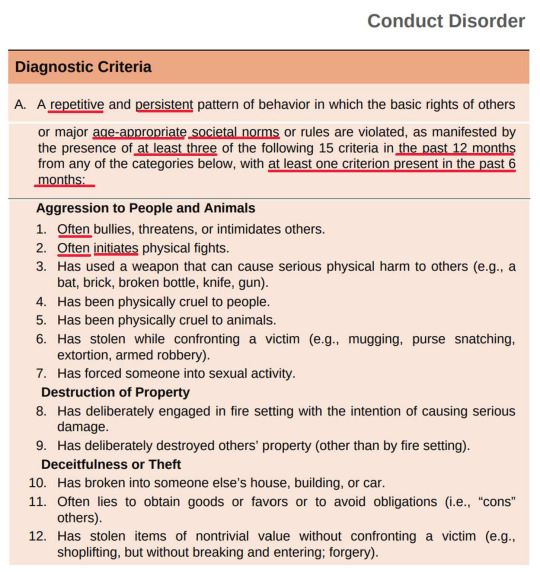
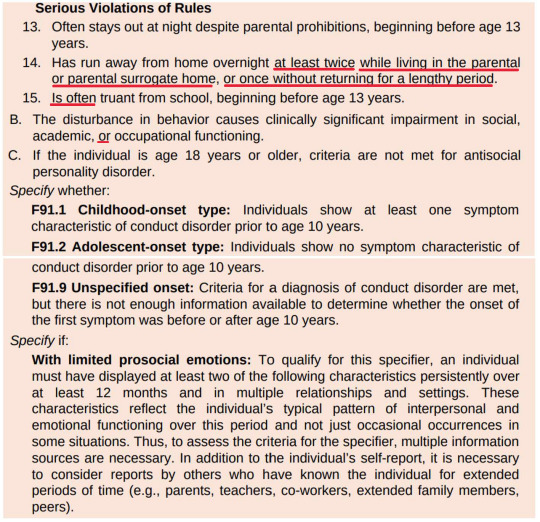
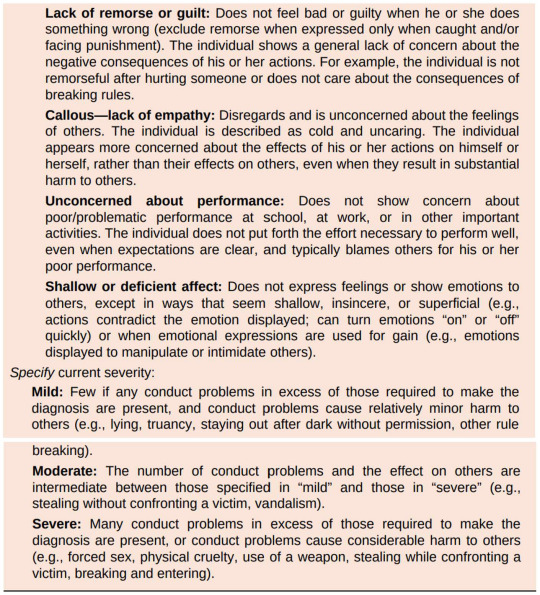
Now a tad bit of explanation, I have underlined in red the keywords to pay attention to when diagnosing. This goes for any diagnostic criteria, not just this disorder in particular. Things that one must always pay attention to are phrases that have to do with 1. onset (when did it start/how long ago did it start), 2. duration (how long has it been going on for/how long have their been symptoms/are there periods with none? etc), 3. frequency (how often is it happening?) & depending on the diagnosis you can also argue a 4. severity/impairment (to what degree does it affect the person's life/level of functioning?)
Now, the biggest things to keep in mind:
*I am only speaking for the American mental health and psychological diagnostic approach, in which I am being currently trained. I am peripherally aware of how some other English-speaking countries approach mental health diagnosis, but I am not versed in it, and it is not my place to make broad generalizations from the American approach to the British, Australian, Canadian, or other approaches, and so on. I am especially not well educated on how non-English speaking countries approach diagnosis. I can only speak to what I know.
Firstly, unlike the other user who was mistakingly relying upon Robert Hare's three-domain model of psychopathy as a basis to diagnose Conduct Disorder, the DSM should be used to diagnose mental health conditions. Not empirical journal articles, handbooks, or manuals on psychopathy that are designed to measure and assess for psychopathy rather than Conduct Disorder. Mental health clinicians can also diagnose using the International Classification of Diseases, 11th ed., (ICD-11) which to my knowledge tends to be the more widely used diagnostic standard outside of the United States.
Secondly, in order to diagnose, all criteria areas have to be met. That means that criteria in categories A, B, and C all have to be met. They each have to be independently be met. You can't just meet criteria for one section and call it a diagnosis. A, B, and C are the lead sections, they each have their instructions of how to meet minimum criteria. If minimums can't be met across all three sections, there is no diagnosis.
Thirdly, this particular diagnosis has some complex language for section A. On a lot of other diagnoses section A is usually more simple and just describes duration of symptoms (ex. Depression section A. person has experienced a period of low mood for at least two consecutive weeks.) Conduct Disorder's section A is very compound so let's break it into smaller bites. 1. repetitive - happens multiple times, but no specified number of how many times, 2. persistent - happens constantly, *note the OR in there 3. age-appropriate social norms - are these things that someone their age would be capable of doing/or do?, 4. rules - are these standard age-appropriate rules that someone this age would break/violate or does it go far beyond that?, 5. need at least 3 (or more) on the list below, 6. has to have been happening for a minimum of 12 months, 7. 1 of the present criteria can still count even if it's manifested only within the past 6 months.
What does this all mean in the plain man's English?
Let's use Johnny as an example, let's say he's 15/16.
Johnny has been experiencing repetitive and persistent difficulties concerning his conduct with peers and adult educators and staff at his high school. Over this past school year, Johnny has received three suspensions related to starting fights on school grounds, and he is currently facing expulsion after a pair of brass knuckles were found in his gym locker. He was described by his homeroom teacher as, "difficult", "defiant", and "a bully to others". When asked if he had friends, Johnny stated that he had some, but proceeded to describe his friendships in transactional terms. "Carlos is ok... He's my friend. He knows how to get the good weed. I still haven't paid him for it *laughs* loser..."
Johnny is currently involved with child services. A case was opened after he was found multiple times by the local police hanging out in local parks beyond curfew getting high. His parents have tried to talk with Johnny about this matter and that repetitive police interactions will not be good for his future, but Johnny laughs at them and tells them to "fuck themselves."
Just from this blurb alone I have had him meet all three main criteria A, B, and C. Can you decipher which pieces for A? Which parts of B does he meet and why? C I took care of for you, because he's under 18, and no one below 18 can meet that diagnosis...
Regarding specifiers:
This usually can be completed with reviewing client history through their files or by interviewing them and/or their parent.
–––––
Do I think Billy meets criteria for Conduct Disorder?
No. I believe he can account for maybe 2 (running away, lying to obtain things) criteria total in section A, if I had to pick a 3rd (staying out late). But I would attribute those 2 rule-violating behaviors as avoidant behaviors that then happen to violate rules. It's something that people with heightened anxiety and trauma-related disorders can venture into. (ie getting so stressed/worried about avoiding a test that one avoids school entirely; a rule violation). The lying is a maladaptive coping skill which probably does fall within conduct lanes, but 3 guesses where he learned it...
It cannot be said that he often bullies or often initiates fights because if this were a true client under consideration and we are using actual canon examples... One example doesn't equate to often. Often is typically considered as three instances or more.
A lot of Billy's behavior is arguably age-appropriate and it doesn't violate social norms or rules. It just violates Neil's rules... or those who are grossly misinformed about what teenagers are. 👀
His behavior has not risen to any heightened degree that it is getting in his way at school (suspension, detention, etc), it's not costing him friendships (tommy, carol, heather, whoever the mystery date was), it's not having any occupational impact (he got hired and he's personable enough that his boss is letting him do kid's swim lessons).
He does not meet criteria. At all. Not A. Not B. And not C.
*drops mic and walks off*
7 notes
·
View notes
Text
SEO Challenges - [Know these Top 7 to Rank Higher]
SEO challenges might look big, but you can solve them too with timely efforts.
In this blog post, I can shed some light on the top 7 challenges faced by SEO professionals including the latest challenge buzz by Search Generative Experience [SGE], and provide insights on how to overcome them.
Do you know? - “Without a strong SEO foundation, you will completely rely on paid spend” – Conductor
SEO Challenges:
1. Changing Search Engine Algorithms:
One of the biggest challenges in SEO is keeping up with the ever-changing search algorithms.
Google, in particular, updates its algorithm multiple times a year, which means that what worked yesterday may not work today.
To stay on top of these changes, it's crucial to keep yourself informed through industry blogs, forums, newsletters, and conferences.
Keep following the blogs of Ahrefs, Semrush, Search Engine Round Table, Search Engine Journal, and Search Engine Land to get yourself updated.
“Because SEO is a dynamic field that involves frequent algorithm updates and evolving best practices, you’ll need to continue your SEO education and keep up with industry changes” – Semrush
2. Conducting Keyword Research:
Another challenge is keyword research. Choosing the right keywords is essential for optimizing your website's content and driving organic traffic.
However, finding the right balance between high search volume and low competition can be tricky.
To overcome this challenge, I suggest using premium keyword research tools like Ahrefs, Semrush, Long Tail Pro, or Keyword Tool to identify relevant keywords with high search volume and low competition.
You might also get some initial keyword research and content ideas from using other SEO tools like Google Keyword Planner, Answer The Public, Also Asked, and Exploding Topics.
You can further supplement your efforts using Quora, and Reddit platforms for most SEO-burning issues discussed, commented, and shared via their forums and communities respectively.
“Your keyword research should go beyond merely evaluating search volume and keyword difficulty to discovering the intent, topical galaxy, audience characteristics, and place in the buyer’s journey for every keyword” – seoClarity
3. Monitoring Technical SEO Issues:
Technical SEO issues can also pose a significant challenge. This includes problems like slow page speed, broken links, indexing errors, duplicate content, and mobile-friendliness.
These issues not only affect your website's user experience but also impact your search engine rankings.
To tackle technical SEO challenges, perform regular audits of your website using tools like Google Search Console, Ahrefs Webmaster Tools, Semrush, or Screaming Frog.
Address any issues that are identified promptly.
“Technical SEO, in its basic form, is ensuring your website has a good technical standing so search engines can crawl, index and rank it well” – SEOTesting
4. Creating High-Quality Content:
Creating high-quality content is another challenge in SEO.
Gone are the days when keyword stuffing could get you to rank higher on search engine results pages (SERPs). Today, search engines prioritize content that provides value to users.
To overcome this challenge, focus on creating informative, valuable, and engaging content that solves your target audience's problems.
Incorporate relevant keywords naturally and aim for content that covers topics comprehensively. Long-form content at all times is not necessary.
Unless the search intent is met as required, even short-form blog posts and articles serve the purpose.
Always focus on people-first approach content than SEO-first approach content, though you can optimize later.
“To excel in today’s evolving digital landscape, content creators must produce high-quality content that provides value and captures their target audience’s attention” – Search Engine Journal
5. Link Building or Backlinks:
Link building is yet another SEO challenge. Building high-quality backlinks from authoritative websites is crucial for improving your website's authority and rankings.
However, acquiring these backlinks can be time-consuming and challenging. To overcome this challenge, focus on creating link-worthy content that others would naturally want to link to.
Additionally, engage in guest blogging opportunities or collaborate with influencers in your industry to earn valuable backlinks.
Engaging in buying backlinks goes against Google's rules, and this approach might not be effective in the long run.
On the other hand, building links through genuine relationships is becoming more valuable and influential nowadays.
Internal linking between relevant website pages or blog posts is also important to remember for better search engine rankings.
“According to Aira’s State of Link Building report, guest blogging is the third most popular link building strategy, with 47% of surveyed SEOs using it as their go-to” – Ahrefs
6. Measuring SEO Performance:
Measuring and analyzing SEO performance can be a challenge.
It's important to track key metrics such as organic traffic, bounce rate, conversion rate, keyword rankings, and any others based on your business-specific to assess the effectiveness of your SEO efforts.
Utilize tools like Google Analytics [GA-4] and Google Search Console [GSC] to gain insights into these metrics and make data-driven decisions.
In fact, according to many SEO experts, using these tools frequently will help you remain ahead by giving you more content ideas, allowing you to establish new SEO benchmarks, and monitoring a variety of user engagement behaviors.
Personally, I regularly check my GSC account to see which keywords my website is ranking for and to come up with fresh ideas for blog posts, and increasing my topical authority.
“Organic traffic (42% votes), followed by conversions (37% votes) and rankings (14% votes) are the top 3 metrics that are most effective in measuring SEO performance” – The State of Technical SEO Report 2023 from Aira & Women in Tech SEO
7. Influence of AI Search Generative Experience [SGE]:
You may know that search engines such as Google and Bing have incorporated AI into their search processes.
While this is still being developed and experimented with, certain bloggers, SEO experts, and website owners have noticed lower click-through rates (CTRs) and decreased organic traffic.
This is because AI-generated search or Search Generative Experience (SGE) results are taking up some of the visibility that was previously directed toward their content.
Simply put, organic results are further pushed down, which reduces the visibility of information. Although SGE doesn't affect every niche-based keyword or phrase, the search landscape is evolving.
Currently, it's necessary to get ready to adapt to this situation.
To enhance the visibility of your website content, focus on generating high-quality content and incorporating a variety of visual elements such as images, infographics, and embedded videos.
“SGE is still in its experimental stage, and many web and SEO marketers are still figuring out how generative AI can impact marketers and users in the future” – HubSpot
Pro-Tip: Make your website or blog mobile-friendly or mobile-optimized and, [if necessary], hire an SEO professional or agency to meet your business-specific needs, and get optimum results.
That being said, SEO isn't a "quick fix" for ranking; it's an ongoing process that requires constant effort and monitoring.
“Search results differ drastically between mobile and desktop. Google recently moved to mobile-first indexing, reflecting the importance and predominance of mobile compared to desktop” – Conductor
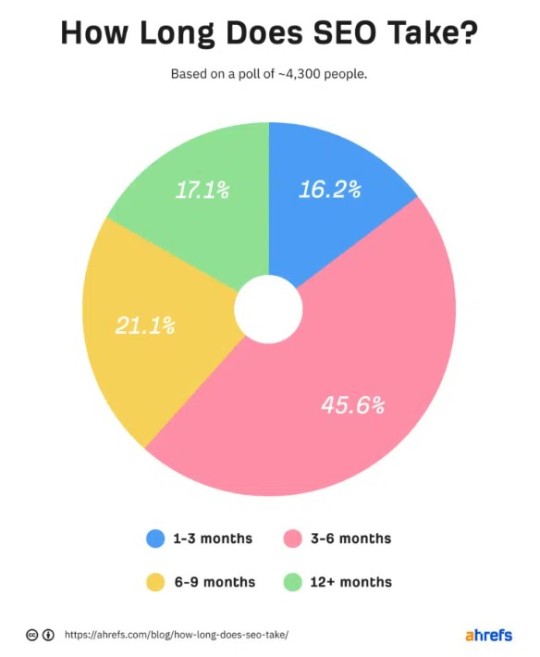
In conclusion, SEO challenges are part and parcel of the ever-evolving digital landscape.
By staying up-to-date with algorithm changes, conducting thorough keyword research, addressing technical issues promptly, creating valuable content, building high-quality backlinks, measuring SEO performance effectively, and sailing through SGE, you can overcome these challenges, and achieve your SEO goals.
Remember, persistence and adaptability are key in this dynamic field.
Here's related information that you may also find helpful – Will AI Kill SEO?
4 notes
·
View notes
Text
Fascinated by the concept of YYH everythings the same but everyone's got sports shoes rather than those weak half-sock-or-"idk a boot?" things
So I'm not a shoe-focused fashion-obsessor, least of all in relation to sports even though I LOVE drawing big sports shoes to jump and run in, but currently this is the vision:
(Note: I'd like to keep these non-anachronistic! Shoes from the 80s, early 90s, or perhaps even the 70s would be good, but I also want to keep in mind WHY they would be having the shoes from whatever year the shoes are from.)
Kuwabara in mostly white 1989 Reebok Pumps, they're so big and pumped?? They look really padded and tall, becoming reminiscent of Kuwa being the biggest and most muscular of the friend group. The 1980 Victory G is also pretty good. The Spot-Bilt X-Press 1986 would also be good!
Key words: tall and bulky (not boots, that's a different genre).
Kuwa strikes me as more economically secure than Yusuke (not rich), and can afford a new pair of shoes if he saves up for them, without much difficulty. Biggest difficulty would be abstaining from buying something else in the meantime.


Kurama is most remembered in his unaltered school uniform - Kuwa and Yusuke are also most remembered in their school uniforms, but theirs have been tailored to fit their own styles and reflect their delinquent streak. Usually having to use the entire arena to attempt to evade attacks and rarely still in motion, I'm drawn towards tennis shoes or shoes with a streamlined design.
Striking me as a sentimental and fashionable person when it comes to his earthly relationships, I think he takes care of his shoes very well. It could be cute if he and his step-dad began a shoe-collection hobby together? But that's fanfic territory and we're trying to keep to headcanons.

Here, a Nike Air Pegasus (1983).
Another word coming to mind is "boring". I think if Shiori had never grown ill, Kurama would not have gotten as involved with the demon realm or spirit office as much as he does in canon (where are the canon divergence fics about Shiori never getting sick. pls, I want canon divergence yyh fics and concepts).
I don't know how successful he is about trying to pass himself off as human as humanly possible, but I do think he tries. He won't sabotage his own grades of course, he will try to be the best son possible, but to be a good person in any society is to fulfill social requirements, and part of that is not sticking out like a sore thumb.
Hence, rather boring shoes.
Keywords: Low/average collar; streamlined and "boring" shape. Outsole should be like an arrow, at the most extreme of stylisations. Colours don't stand out.
Nike or adidas, I think. Sneakers?



Oooh these Adidas Brougham shoes are really neat! Finally I like a design that doesn't have navy-orange combo! The sole is very ominous... it gives a little bit Imperial Japan vibes to me bc of the red circle here, but it's not enough that I think it'd read as a whistle in terms of character design. It is a good reminder though to think about the sole of the shoe, though. The characters jump around a lot, having something more exciting than a solid colour for the sole would be good.

The Diadora Maverick 1987 would also be good! Oh wait there's Italy, fuck that... on the other hand,
"An archetype of preppy cool, the Maverick held as much cultural weight as any tennis release from Reebok, Nike or adidas. Due to fickle tastes and the advent of tech shoes as status symbols, this would be Diadora's finest moment." (complex.com, Russ Bengtson, Gary Warnett, Nick Schonberger)
Isn't that very Kurama? And nothing is keeping the boy from customising the shoes. A boring shape, with colours that don't stand out, but with minute details that he alone or an observant friend might appreciate.
References:
www. 80sfashion.org/popular-shoes-of-the-1980s/
www. liveabout.com/the-8-coolest-running-shoes-of-the-1980s-3019213
www. complex.com/sneakers/a/russ-bengtson/the-80-greatest-sneakers-of-the-80s
// retrobok.wordpress.com/2011/07/27/hall-of-fame-80s/
// inthe1980s.com/80s-shoes/
1 note
·
View note
Text
youtube
Watch the 2024 American Climate Leadership Awards for High School Students now: https://youtu.be/5C-bb9PoRLc
The recording is now available on ecoAmerica's YouTube channel for viewers to be inspired by student climate leaders! Join Aishah-Nyeta Brown & Jerome Foster II and be inspired by student climate leaders as we recognize the High School Student finalists. Watch now to find out which student received the $25,000 grand prize and top recognition!
#ACLA24#ACLA24HighSchoolStudents#youtube#youtube video#climate leaders#climate solutions#climate action#climate and environment#climate#climate change#climate and health#climate blog#climate justice#climate news#weather and climate#environmental news#environment#environmental awareness#environment and health#environmental#environmental issues#environmental education#environmental justice#environmental protection#environmental health#high school students#high school#youth#youth of america#school
11K notes
·
View notes
Text
Week 8 Studio Tutorial – Digital Iteration
Pre-class work
The pre-class work, involving a case study on Andrew Simpson's model-making process, was really insightful especially considering I was working on my own models and iterations in my studio class.
Whilst I knew of the importance of model-making in communicating a product's form, this video really highlighted key ideas such as the perceived value of a product, it's materiality and the ergonomics of the product through allowing consumer-object interactions within this process.
With this insight, in my next project, I'll definitely spend less time working on pen and paper and try to jump into 'low-fidelity' model-making as soon as possible, which consists of creating quick sketch models which may consider the form and feel in the hand, as well as reviewing dimensionality, aesthetics etc. Constructing many low-fidelity models will allow me to explore my options and therefore progress onto more refined ideas quicker. These can then be represented in more limited 'high-fidelity' models, which really focus on the exact dimensions, functionality and perhaps look into materiality and finish. I'm keen to bring this new knowledge into my next design project!
In-class work: Part 1 - Introduction to 3Dsmax
Navigating a new program was definitely a difficult and time-consuming process. I found that at first, even trying to perform the most basic tasks such as locating where a certain tool was or even trying to rotate or move an object wasn't straightforward. I found myself constantly searching up where certain commands and tools that were being described in the week 8 tutorial document or a Youtube video were, as my interfaced differed from the one being shown or described. Although tedious, this process of familiarity of navigation is necessary to make any progress. I definitely found that watching the video tutorials provided, as well as some additional videos on Youtube, is a superior method of learning in comparison to just reading written tutorial notes.
I found that setting up the gizmos and pivot points was really confusing, as I wasn't sure if I had correctly set it up according to the instructions. Reflecting upon these confusions and difficulties, I think the only way forward is more practice, more research, and more clarification. I think next time, if we're given any in-class time to work on CAD, I'll definitely try to use my time more efficiently so I can ask questions in real time, where my queries can be clarified straight away, rather than trying to find the right keywords or names of certain functions to Google.
Overcoming the frustration of learning a new program is definitely an experience I'll need to get used to in this degree, as each program will have it's own nuances which I will need to be patient with and work through as an industrial designer.

Once I had set up everything and created my sphere, I began to play around with the modifiers as instructed. This gave me insight into the possibilities of 3Dsmax and I was excited at the prospects of what I could do in future if I were to use it more frequently.




Playing around, I could definitely see how the program may be used for furniture or object design CAD purposes, and I began to try to create forms that were familiar, such as an hourglass shape, a bar of soap and a form that could potentially be a stand or table. One really interesting modifier that I got really exciting results from was the noise modifier with the fractal toggle on. As seen in the bottom left picture, I was able to create an organ-like, almost feotal, alien form. I loved how organic and detailed this result was compared to some of the other modifiers I'd used. I'll definitely be revisiting this modifier to see what interesting creations can come out of it.
Part 2 - Polygon Modelling


Delving into polygon modelling definitely gave me a better idea of the capabilities and possibilities of 3Dsmax. The youtube tutorials were really helpful as they introduced key tools of extruding, chamfering, cloning, bridging and NURMS. Following the tutorial of creating the train-station seat using NURMS really gave me insight into the process of using this tool. It is a trial-and-error type process involving going back-and-forth and seeing what little changes using differing tools creates the best end-result. Knowing this, I've gathered that I should give myself ample time to explore whilst creating something on a digital platform, especially one in which I'm unfamiliar with and the tools seemingly neverending.


When moving onto the next step, I challenged myself to make a chair I had found on Pinterest. I used a range of tools, including modifying simple primitives from part 1, as well as utilising the polygon modelling skills I had acquired in part 2. Whilst not an exact replica, I was happy I had enough control in 3Dsmax to create an intentional form, involving an organic seat form with a divet and incline and rounded chair legs of a certain angle.




Next, I decided to create a more hard-edged, geometric form. I wanted to create an abstract sculpture of sorts, which may be featured on the street or in an exhibition. Rather than replicating, here I was able to let myself really go to extremes with the tools and experiment and see what forms could come out of it.
This was a very challenging, frustrating yet really rewarding a valuable week for me. CAD and digital programs are always more daunting for me as someone who sees myself as a more creative and hands-on rather than a tech-savvy person. I'm happy with my overall progress and the outcomes which came from it, and next time I'll definitely know to give myself lots of time to explore a new program, as it is a very time and energy consuming process.
14 notes
·
View notes
Text
Lao Tzu (老子), All chapters bibliographical ~ ~ Part 3 (3/3:final):Essay

Lao Tzu (Kouji Fukunaga: paperback Chikumagakugei bunko)
The Chinese classic "Lao Tzu" is a short document consisting of a short sentence fragment and 81 chapters (5,000 words), but its meaning is very deep. From now on, I will divide it into three parts and list the keywords and key points of each chapter. It is written as @ 1 = Chapter 1. 81/3 = 27 chapters each. The source is from "Lao Tzu" (Tamaki Ogawa, translation: Chuko Bunko). This blog makes sense to index and organize the Lao Tzu in me. This is the third (final) time.
(Before accepting)
@ 55: "Baby's virtue. It does not be attacked by dangerous animals (snakes, scorpions, bees, beasts, birds of prey, etc.)" "It has a lot of vitality." Lao Tzu praises the baby.
@ 56: " Those who know do not say. Those who say do not know.." Soften wisdom and assimilate with garbage:和光同塵" (@ 4) & "Saints can neither benefit nor do harm, because they are beyond praise and Backbiting . "
@ 57: "Government of the nation faces with" positive ", and military faces with" strange ". "&" A clever engineer creates an unfamiliar item. The people fight for this and the nation becomes dark. "" If you lose your greed, the people will become a Tree as cut out:樸 "(樸 has been frequent in the past. @ 19, @ 28, @ 32, etc.)
@ 58: "When politics is absent, the people are unsophisticated. When politics Keep eyes out, the people are dissatisfied and fight each other." & "Saints do not hurt people. Light in their hearts. There is, but there is no sparkle that catches the eyes. "
@ 59: "It is best for the monarch to take a regrettable attitude."
@ 60: "Governing a great power nation is like the act of" boiling small fish. " "
If you put your hand out too much and stir it, the fish will fall apart.
@ 61: "The great power nation are downstream of the river, the small ones are upstream. Just as the river flows from the tributary to the main stream, the small powers want to be fed, and the great powers want to feed." It is important to be modesty to the great power nation. "
(This part, in history, is inconsistent with the fact that the real powers forcibly annex the small ones for their own benefit. "The big nation only wants to feed everyone, All the small country wants to be subordinate to and serve another country. ”(P138) Of the“ Lao Tzu, ”I am the most mysterious contradiction. Is this the desire of the Lao Tzu? It is a small country. Did Tibet and Uighur move forward to become China's autonomous regions? And isn't China's policy a fierce attempt to erase their own culture and destroy them and make there unique country of Han Chinese?) (See @ 80)
@ 62: "The saint will not abandon the people even if they are bad. Everything is attributed to the work of the Tao." (@ 49)
@ 63: "Don't act, don't interfere. Taste the tasteless things." & "Take virtue against grudges."
This expression is reminiscent of the Christian teaching that "if you were hit your right cheek, give your left cheek."
& "There are some difficulties for saint, but in the end it will overcome."
@ 64: "Process in the signs of things. The trip of thousand miles also starts from your feet."
& "Because the saint does nothing, he does not damage anything, and because it does not stick to anything, he does not lose anything." & "The saint wants what it does not want. It doesn't want something that is hard to get. (@ 3, @ 12)
@ 65: "Negation of politics by wisdom."
@ 66: "The virtue of being low-profile." "No one can contend with a saint who does not contend."
@ 67: "The vast Tao looks stupid." & "Saints have three treasures. Charity, frugality, and not being Head".
(Head = head, head of organization)
@ 68: "The virtue of no conflict." "People who use people well are humble."
The old letter(kanji:漢字) of the letter "fight" is a hieroglyph that "two hands are trying to hold something one thing". In this case, the "thing" may be a political victory. There are many events that "things" point to.
@ 69: "The key to the war is not to be the main body of the attack, but to take a step back." "The army with sorrow always wins."
@ 70: "My words are easy to understand and practice, but no one does. (So) the saint wears brown clothes and have a jewel (wears poor clothes and hides the treasure)."
@ 71: "It's good to know and not know, it's a drawback to know without knowing."
@ 72: "If the people are not afraid of disasters, a big disaster will come."
@ 73: "Those who are not afraid to do boldly will be killed, and those who are not afraid to be timid will survive." & "The net of heaven is rough, but it will not be missed:(天網恢恢疎而不失). (This word is also famous. Although "天網恢恢疎而不漏" is more Overwhelmed by the population)
@ 74: "How do you threaten people who are not afraid of death?" "If I kill something new, why can I kill it unharmed instead of a great executor? (It can be done by God. Only.) "
@ 75: "People starve because the rulers take too much tax." & "Those who don't care about life at all are wise than those who value life."
@ 76: "When a person is born, it is soft, and when it dies, it is hard. The hard one is a death companion and the soft one is a life companion.
@ 77: "The way of heaven takes away from the surplus and gives it to the shortage, but the actual human society is the opposite."
Even if you look around the world, the rich are getting more and more financial power, and the poor are deprived more and more money. Since the time of the Junichiro Koizumi Cabinet, the Gini coefficient, which indicates the difference between rich and poor Japanese people, has risen.
@ 78: "Nothing is as soft as water, but no matter how hard it is, it is no match for water." (There are many references to the virtue of water ... @ 8, @ 43, etc.)
@ 79: "Even if you reconcile those with deep resentment, the resentment remains. Only the saints can reconcile this." & "There is no favor in the way of heaven. Always give to good people. "
@ 80 "小国寡民(Small country&few people) :An ideal society drawn by Lao Tzu"
The country is small and the population is small (let's say). If you don't want the military to use the tools you need, if you have them, and you want the people to take their lives and not move far away, you don't have to ride a ship or car wherever you have it. Where there are insteps and weapons, there is no chance to show them side by side. Once again, (as well as) the (ancient) world of using ropes tied by people (in contracts), making their (bad) food look good, making their (poor) clothes feel good, and Let them settle down and make their (simple) habits (life) enjoyable. (If that happens) the neighboring country is immediately visible, and even if they can hear the roar of chickens and dogs, the people will not come and go (with people from other countries) until they are old and dead.
("Lao Tzu": Tamaki Ogawa, translated from P167-P168)
The description around here is inconsistent with @ 61. It is not clear whether Lao Tzu really wants the people to live in a small country or in a large country. (Is the distinction between large and small countries relative?) This one point is difficult for me to understand.
@ 81: "The belief is not beautiful, the flowerly word is not belief. (There are some antithesis below)" & "I give out everything to others, and I have more and more possessions." & "Saint's way Is something that acts and does not contend. "
("Lao Tzu (老子), All chapters bibliographical " completed)
#Lao Tzu#81 chapters#5000word#its meaning is very deep#baby#和光同塵#wears poor clothes and hides the treasure#小国寡民#Small country&few people#The belief is not beautiful#the flowerly word is not belief#water#essay#Rei Morishita
3 notes
·
View notes
Text
Aap bhi yadi nye blogger hai to ye galti kabhi nhi kre! Is tarah se kre keyword research!!!
अक्सर जो beginner blogger होते है वो youtube से video देखकर blogging तो start कर देते है लेकिन जब कीवर्ड रिसर्च की बात आती है तो वो हमेशा गलती करते है और एक अच्छा ब्लॉग पोस्ट लिखने के बाद में भी उनका पोस्ट रैंक नही कर पता है क्योकि वे कीवर्ड रिसर्च ठीक से नही करते है और जब पोस्ट पब्लिश करते है तो उस पोस्ट का seo भी सही से नही करते जिस कारण उनका पोस्ट रैंक नही कर पाता है.

New beginner blogger को कीवर्ड रिसर्च करते समय हमेशा निम्नलिखित बातो का ध्यान रखना चाहिए
Long tail keyword को ही यूज करे
ऐसे keyword पर काम करे जिसका competition low हो. वो keyword जिनकी keyword difficulty 0-10 हो, उन्ही keyword को यूज करे. और यदि 0-5 keyword difficulty वाले keyword को आप यूज करते है तो ये और भी अच्छी बात होगी. continue reading...
#Blog traffic#keyword#keyword research#Lsi keyword#blog post#Increase Blog traffic#New blogger#new blogger
2 notes
·
View notes
Text
The Ultimate Keyword Hack: Find Low-Competition Keywords
How To Find Low Competition Keywords
In the world of blogging, keywords play a key part in determining the success of your blog. Still, to Find low competition keywords that can help you rank high in search engine results runners (SERPs), can be very challenging. Here will talk about how to get low difficulty keywords and increase your chances of getting more organic traffic to your blog.
https://ahrefs.com/
What are Low…

View On WordPress
#ahrefs#Find low competition keywords#google#how to earn money#how to get Google AdSense Approval#how to get organic traffic#how to rank on google#low difficulty keywords#semrush
1 note
·
View note
Text
Best Way to Improve SEO Keyword Ranking in Search Engines

SEO is one of the best ways to improve your website’s organic search rankings. For that to happen, you need to find out the right keywords and optimize your website content accordingly. While SEO keyword ranking might appear to be a time-consuming task, the results are well worth the effort! The following tips can help you in your ranking efforts:
Find keywords with low ranking difficulty
Known your target audience and create a sample persona
Research on the current audience of your website
Create high-quality backlinks with good referring domains
Work towards improving your website’s domain authority
Initiate a website activity schedule and try to be active daily
Check it out here: https://sutra.digital/services/
1 note
·
View note
Text
The Ultimate Guide to Keyword Research Strategies for SEO Success - 2024
Introduction
Knowing how to do effective keyword research is essential for any successful SEO strategy in the rapidly changing digital market. The link between the stuff you offer and what people are searching for is created by keywords. But how can you make sure your content stands out in this large ocean of keywords? Don't worry; we'll go deep into keyword research tactics to give you the skills and information you need to push your website to the top of search engine results pages.
Fundamentals of Keyword Research:
It's important to grasp the fundamentals before tumbling into the sea of keywords. The words or phrases people enter into search engines to find information are known as keywords. Finding these terms through effective keyword research can help you optimize your content for increased visibility and relevance.
How Can I Get Ideas for Keyword Research?
Finding profitable keyword ideas is a combination of data analysis and imagination. Start by coming up with ideas for subjects related to your industry or niche. Then, make use of keyword research tools to add to your list and find undiscovered treasures that complement your content objectives.
9 Keyword Research Tools ( Free & Paid )
Google Keyword Planner:
A free tool that helps you find profitable keywords for your content by giving you information on search traffic, competition, and trends for keywords.
SEMrush:
With its extensive toolkit of SEO tools, SEMrush enables you to monitor your rankings, analyze competitors, and perform in-depth keyword research.
Ahrefs:
Distinguished by its vast database, Ahrefs assists you in finding new keywords, examining backlinks, and tracking the effectiveness of your website.
Moz Keyword Explorer:
This tool from Moz makes it easier to identify high-potential keywords for your SEO efforts with features like keyword difficulty and SERP research.
UberSuggest:
UberSuggest A simple-to-use tool that helps you improve your keyword strategy by offering suggestions for keywords, information on search volume, and competition analysis.
KeywordTool.io:
This tool provides insightful information about user intent by generating long-tail term ideas based on autocomplete data from search engines.
SpyFu:
With a focus on competitor analysis, SpyFu gives you the ability to obtain an advantage over your rivals by identifying the most lucrative keywords and advertising tactics.
LongTailPro:
This tool simplifies the process of conducting keyword research by concentrating on long-tail keywords. It makes it simpler to find low-competition, high-converting keywords.
AnswerThePublic:
AnswerThePublic generates original keyword suggestions based on user inquiries, prepositions, and comparisons by visualizing search query data.
Keyword Difficulty:
Prioritizing your keyword goals requires an understanding of keyword difficulty. This statistic evaluates a keyword's competitiveness by taking into account variables such as search traffic and the strength of rival pages. To get the most out of your SEO efforts, strike a balance between keywords with a high search volume and those with reasonable competition.
How Can I Select a Keyword?
Think about things like competitiveness, search volume, and relevancy when choosing keywords for your content. Choose keywords that balance popularity and attainability, keeping in mind the nature of your material and the aim of your audience. To increase your chances of appearing higher in search results and getting highly focused traffic, concentrate on long-tail keywords as well.
7 Advanced Tips and Strategies:
Utilize Keywords for Latent Semantic Indexing (LSI):
To increase semantic relevance and diversity in your keyword strategy, include synonyms and similar terms.
Examine SERP Elements:
Examine search engine results pages (SERPs) to find knowledge panels, featured snippets, and other rich snippets. Then, customize your material to make it more visible.
Utilize Content Generated by Users:
Keep an eye on forums, social media, and online communities to find current themes and user-generated keywords related to your business.
Perform Seasonal Keyword Research:
To match your content to the news and interests of your audience, anticipate seasonal trends and make use of relevant keywords.
Optimize for Voice Search:
In order to reach voice search consumers, make sure your material is optimized for conversational keywords and natural language searches, given the increasing popularity of voice-activated devices.
Prioritize User Intent:
Recognize the purpose of user inquiries (such as informational, navigational, or transactional) in order to personalize your content and offer solutions with additional value.
Keep an eye on and refine:
Keep an eye on the performance of your keywords, keep tabs on rankings, and adjust your approach in response to changing trends and insights from analytics data.
Conclusion
Keyword research is a dynamic, iterative process that calls for a combination of creativity, strategic planning, and data analysis. By using the strategies outlined in this article and the necessary resources, you may fully realise the potential of keyword research to improve visibility, produce organic traffic, and ultimately succeed in search engine optimisation. Your website's search engine rankings will soar to new heights if you keep learning and making adjustments.
Read more of our blogs
#keywords research#keywords research tool#keywords research strategy#Keyword Research Strategies 2024#Keywords Research Best Practices 2024
0 notes
Text
Unraveling Digital Marketing Challenges: Insights for Businesses in Kolkata
In Kolkata's bustling business landscape, digital marketing poses both opportunities and challenges. Previously addressed pain points include:
Limited Online Visibility: Many businesses struggle with low online visibility due to ineffective digital marketing strategies. Solution: Implement SEO techniques like keyword optimization, content marketing, and backlink building to enhance online presence.
Audience Engagement: Engaging the target audience proves challenging without tailored content and interactive platforms. Solution: Create engaging content like videos, infographics, and polls to foster interaction and build a loyal audience base.
ROI Measurement: Difficulty in measuring ROI hinders businesses from evaluating the effectiveness of their digital marketing efforts. Solution: Utilize tools like Google Analytics to track website traffic, conversion rates, and customer behavior to gauge ROI accurately.
Social Media Management: Managing multiple social media platforms efficiently demands time and expertise. Solution: Utilize social media management tools like Hootsuite or Buffer to schedule posts, track performance metrics, and streamline social media campaigns.
Adapting to Trends: Staying updated with the ever-evolving digital marketing landscape poses a challenge for businesses. Solution: Regularly monitor industry trends, attend webinars, and invest in continuous learning to adapt strategies accordingly.
Budget Constraints: Limited budget allocation for digital marketing restricts businesses from exploring various channels. Solution: Prioritize digital marketing channels with high ROI potential, such as targeted ads on social media platforms or PPC campaigns.
By addressing these pain points effectively, businesses in Kolkata can unlock the full potential of digital marketing to enhance their online presence, engage their audience, and drive business growth. Partnering with a reputable digital marketing company in Kolkata can further amplify these efforts, providing specialized expertise and tailored strategies to navigate the digital landscape successfully.

#digital marketing company in Kolkata#digital marketing company kolkata#digital marketing company#digital marketing#like#share
0 notes
Text
How To Keyword Research for Blog in 5 Easy Steps

You’ve probably heard that keyword research is the foundation of any successful blog.
But what does that mean exactly?
And how do you do it?
Keyword research is the process of finding and analyzing the words and phrases that your target audience uses to search for information online.
By understanding what they are looking for, you can create content that matches their needs and interests, and rank higher on Google.
But how do you find the right keywords for your blog?
And how do you use them effectively in your content?
In this article, I’ll show you how to do keyword research for your blog in 5 easy steps.
You’ll learn how to:
- Find keyword ideas based on your niche, topics, and competitors
- Analyze the keyword difficulty, search volume, and user intent
- Choose the best keywords for your blog posts and pages
- Optimize your content with keyword placement, density, and variations
- Track and measure your keyword performance and results
Ready to get started?
Let’s dive in!
Step 1: Find Keyword Ideas Based on Your Niche, Topics, and Competitors
The first step of keyword research is to generate a list of keyword ideas that are relevant to your niche and topics.
There are many ways to do this, but here are some of the most common and effective methods:
- Use your own brainstorming. Think about the main topics and subtopics that you want to cover on your blog, and write down the words and phrases that you would use to search for them. For example, if you have a blog about photography, you might come up with keywords like “how to take better photos”, “best camera settings”, “photo editing tips”, etc.
- Use Google’s suggestions. Type in your keywords on Google and see what suggestions it gives you. These are based on what other people are searching for, and can help you find more specific and long-tail keywords. For example, if you type in “how to take better photos”, Google might suggest “how to take better photos with iPhone”, “how to take better photos in low light”, “how to take better photos for Instagram”, etc.
- Use related searches. At the bottom of the Google search results page, you’ll see a section called “related searches”. These are also based on what other people are searching for, and can help you find more variations and synonyms of your keywords. For example, if you search for “best camera settings”, you might see related searches like “best camera settings for portraits”, “best camera settings for landscape”, “best camera settings for beginners”, etc.
- Use keyword research tools. There are many free and paid tools that can help you find more keyword ideas, as well as provide useful data on their difficulty, volume, and intent. Some of the most popular tools are Google Keyword Planner, Moz Keyword Explorer, Kinsta Keyword Tool, and HubSpot Keyword Tool. These tools can help you find keywords based on your seed keywords, your competitors, your niche, and more.
Step 2: Analyze the Keyword Difficulty, Search Volume, and User Intent
Once you have a list of keyword ideas, the next step is to analyze them and see which ones are worth targeting.
There are three main factors that you need to consider:
- Keyword difficulty. This is a measure of how hard it is to rank for a keyword, based on the competition and authority of the websites that are already ranking for it. The higher the difficulty, the harder it is to rank. You want to find keywords that have low to medium difficulty, meaning that they are not too competitive, but still have some demand and potential.
- Search volume. This is a measure of how many people are searching for a keyword, usually per month. The higher the volume, the more popular and profitable the keyword is. You want to find keywords that have high to medium volume, meaning that they have enough traffic to drive to your blog, but not too much that they are too competitive or broad.
- User intent. This is a measure of what the user is looking for when they search for a keyword, and what kind of content they expect to find. There are four main types of user intent: informational, navigational, transactional, and commercial. You want to find keywords that match the intent of your content, and provide the best answer to the user’s query.
Step 3: Choose the Best Keywords for Your Blog Posts and Pages
After analyzing your keywords, you should have a shortlist of the best ones that you want to target for your blog.
The next step is to choose which keywords to use for which blog posts and pages.
There are two main types of keywords that you need to consider:
- Primary keywords. These are the main keywords that you want to rank for, and that describe the main topic and purpose of your content. You should only have one primary keyword per blog post or page, and use it in your title, URL, headings, and throughout your content.
- Secondary keywords. These are the supporting keywords that are related to your primary keyword, and that provide more context and detail to your content. You can have multiple secondary keywords per blog post or page, and use them in your subheadings, paragraphs, images, and links.
For example, if you want to write a blog post about how to take better photos with iPhone, your primary keyword might be “how to take better photos with iPhone”, and your secondary keywords might be “iPhone camera settings”, “iPhone photography tips”, “iPhone photo editing apps”, etc.
Step 4: Optimize Your Content with Keyword Placement, Density, and Variations
Once you have chosen your keywords, the next step is to optimize your content with them.
This means that you need to use them strategically in your content, so that Google and your readers can understand what your content is about, and rank it accordingly.
There are three main aspects of keyword optimization that you need to pay attention to:
- Keyword placement. This is where you use your keywords in your content, and how often you use them. You want to use your primary keyword in the most important places, such as your title, URL, meta description, first paragraph, and main heading. You also want to use your secondary keywords in your subheadings, paragraphs, images, and links. You don’t want to overuse your keywords, as this can look spammy and unnatural, and hurt your ranking. A good rule of thumb is to use your primary keyword once for every 100 words, and your secondary keywords once for every 200 words.
- Keyword density. This is the percentage of your content that is made up of your keywords. You want to have a balanced keyword density, meaning that you use your keywords enough to make your content relevant, but not too much to make it repetitive and boring. A good rule of thumb is to have a keyword density of 1-3% for your primary keyword, and 0.5-1% for your secondary keywords.
- Keyword variations. These are the different ways that you can use your keywords in your content, such as synonyms, plurals, modifiers, and long-tail versions. You want to use keyword variations to make your content more diverse and natural, and to target more search queries. For example, instead of using “how to take better photos with iPhone” all the time, you can use variations like “how to improve your iPhone photography”, “how to capture stunning photos with your iPhone”, “iPhone photo tips and tricks”, etc.
Step 5: Track and Measure Your Keyword Performance and Results
The last step of keyword research is to track and measure your keyword performance and results.
This means that you need to monitor how your keywords are ranking on Google, how much traffic they are driving to your blog, and how well they are converting your visitors into subscribers or customers.
There are many tools that can help you track and measure your keyword performance and results, such as Google Analytics, Google Search Console, Moz Pro, and SEMrush. These tools can help you see:
- How your keywords are ranking on Google, and how they compare to your competitors
- How much organic traffic your keywords are bringing to your blog, and which pages are getting the most visits
- How your keywords are affecting your bounce rate, dwell time, and engagement metrics
- How your keywords are influencing your conversion rate, revenue, and ROI
By tracking and measuring your keyword performance and results, you can see what is working and what is not, and make adjustments and improvements accordingly.
You can also discover new keyword opportunities and trends, and optimize your content accordingly.
That’s it!
You’ve just learned how to do keyword research for your blog in 5 easy steps. Now you can create content that attracts and converts your target audience, and rank higher on Google.
I hope you found this article helpful.
Read the full article
2 notes
·
View notes
Text
Exploring Challenges of Women with Disabilities in Accessing Higher Education
The review paper explores the difficulties that women with disabilities face in accessing higher education in India. There is an urgent need to identify and overcome the significant barriers faced by women with disabilities in accessing higher education. According to research, students with disabilities are less likely to complete their university degrees, and there are fewer women with disabilities enrolled in higher education. This article identifies the causes of the low participation rate of female students with disabilities in higher education. Due to their colour, age, language, society, culture, and religion, as well as their impairment, women with disabilities frequently face tremendous obstacles of injustice and prejudice. Higher education institutions frequently exclude and devalue women with disabilities. It has been proven that women with disabilities are capable of having the same success as those who are not disabled. For women who have disabilities, the risk of sexual, emotional, and physical abuse is three times higher. The most significant ones among the many that contribute to the mistreatment, discrimination, and exclusion of women in or from higher education in India are poverty, sexual abuse, rigid policy, indifferent reactions, limited learning resources, a lack of technology, untrained faculty, negative peer and staff attitudes, inaccessible library and infrastructure, inadequate transport options, a lack of accessible housing, and others.
Keywords: Women with disabilities, higher education, accessibility, challenges, overcoming strategies
0 notes
Text
🚀 Are you looking for the best and most profitable keyword research for the SEO of your website? You have come to the right place. I'll assist you with the best and most excellent SEO keyword research & competitor analysis services that rank.
😲What you will get:
1. Monthly Search volume
2. Cost Per Click (CPC)
3. Keyword Difficulty
4. Keyword Report
5. Competitor keyword analysis
6. Long Tail keywords
7. Easy to rank on search engine
8. Special Hidden GIFTS (Exclusive)
9. On time delivery
10. Low SEO Difficulty ( Very Easy to Rank)
11. Commercial and informative topics
😲 Why Hire Me?
1. 5 years of experience working
2. 100% Money back guarantee
3. Affordable Service
4. Complete Usage Guide!
5. Fast response on modification
6. Customer Satisfaction is my top priority!
7. I Use Tools For Keyword Research : Ahref, Semrush, Keyword Surfer, KWFinder, Ubersuggest.
7. customizable, editable, and complete Keyword excel report
8. Delivery in less than 24 hours
9. 100% fast Response
Thanks
Please Contact me on Fiverr for any special requirements and Discounts on bulk orders.
👉Feel Free to contact me before placing the order.🥰😊
👉 If You Need Keyword Research Services Feel Free to Visit Me On Fiverr. Please check out my fiverr gig 😊🥰
#keywordresearch
#keywordservice
#usaclient
#client
#usapeople
#worldpeople
👉 Please click my fiverr gig :
https://www.fiverr.com/s/lPVdNA
1 note
·
View note